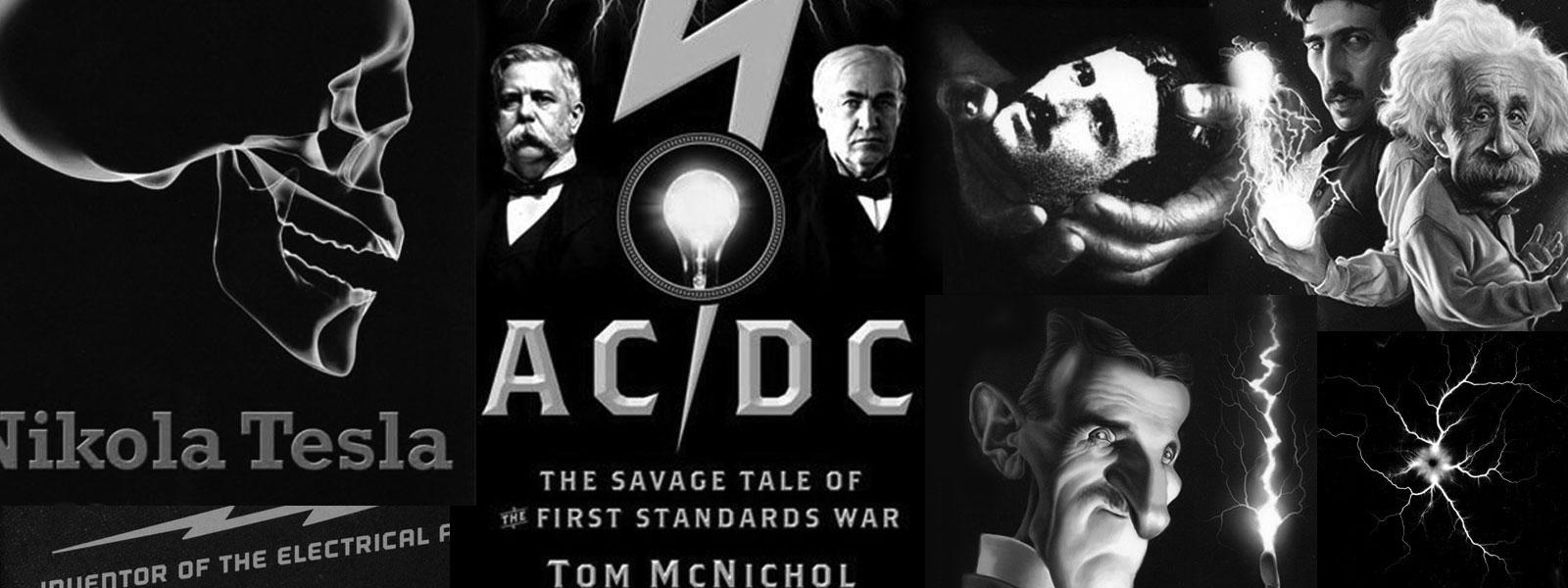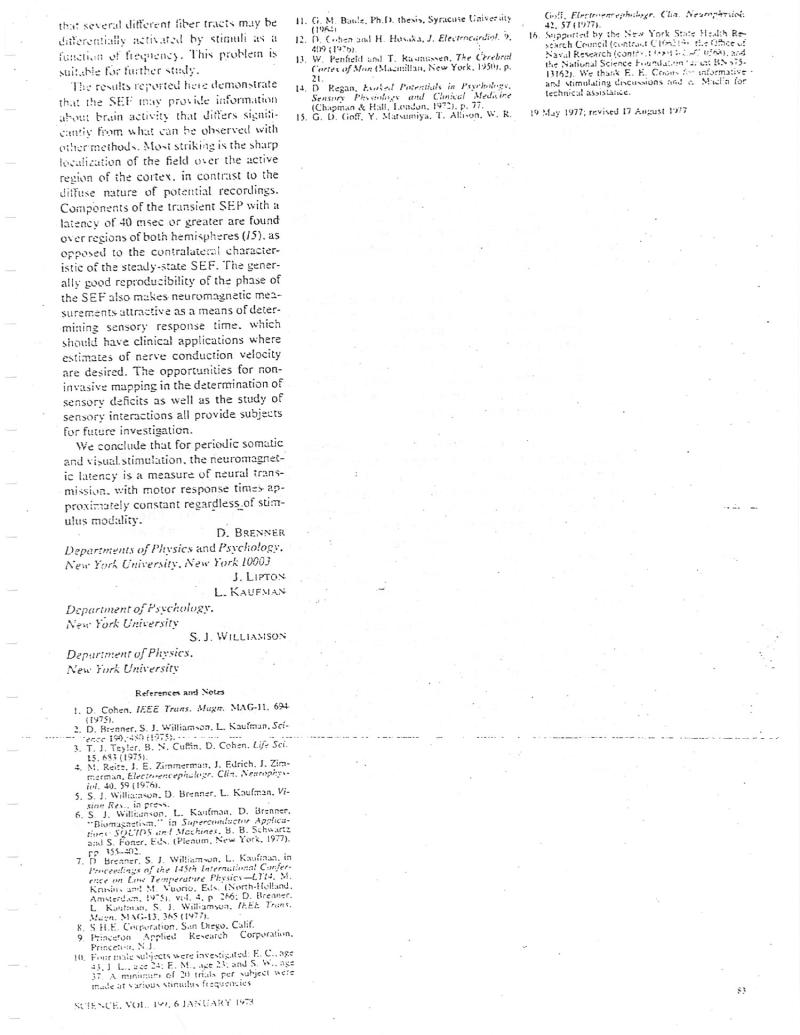
Nikola Tesla Books
that several different fiber tracts may be diferentially activated by stimuli as a function of frequency. This problem is suitable for further study. The results reported here demonstrate that the SEF may provide information about brain activity that differs signiticantly from what can be observed with other methods. Most striking is the sharp localization of the field over the active region of the cortex, in contrast to the diffuse nature of potential recordings. Components of the transient SEP with a latency of 40 msec or greater are found over regions of both hemispheres (15), as opposed to the contralateral characteristic of the steady-state SEF. The generally good reproducibility of the phase of the SEF also makes neuromagnetic measurements attractive as a means of determining sensory response time, which should have clinical applications where estimates of nerve conduction velocity are desired. The opportunities for noninvasive mapping in the determination of sensory deficits as well as the study of sensory interactions all provide subjects for future investigation. We conclude that for periodic somatic and visual stimulation, the neuromagnetic latency is a measure of neural transmission, with motor response times approximately constant regardless of stimulus modality. D. BRENNER Departments of Physics and Psychology. New York University, New York 10003 J. LIPTON L. KAUFMAN Department of Psychology, New York University S. J. WILLIAMSON Department of Physics. New York University References and Notes 1. D. Cohen. IEEE Truns. Mugn. MAG-11. 694 (1975). 2. D. Brenner. S. J. Williamson, L. Kaufman, Science 190,-450 (1975). 3. T. J. Teyler. B. N. Cuffin, D. Cohen. Life Sci. 15.683 (1975). 4. M. Reite, J. E. Zimmerman, J. Edrich. J. Zimmerman, Electroencephaloge. Clin. Neurophysiol. 49. 59 (1976). 5. S. J. Williamson, D. Brenner, L. Kaufman. Visinn Res.. in press. 6. S. J. Willunson. L. Kaufman. D. Brenner. "Biomagnetism." in Superconductor Applicatines SQUIDS and Machines. B. B. Schwartz and S. Foner. Eds. (Plenum, New York, 1977). FP 355-402. 7. D Breaner. S. J. Williamson, L. Kaufinan, in Proceedings of the 145th International Confer ence on Love Temperature Physics-LT14. M. Kausius an! M. Vuorio. Eds. (North-Holland. Amsterd.em. 1975). vid. 4. p 266: D. Brenner. L Kautman. S. J. Williamson. IEEE Trans. Magn. MAG-13, 365 (1977). 8. S H.E. Corporation. San Diego, Calif. 9. Princeton Applied Research Corporation. Princeton, N.. 10. Four male subjects were investigated: E. C.. age 43. Lase 24: E. M.. age 23 and S. W., age 37. A minimum of 20 trials per subject were made at various stimulus frequencies SCIENCE. VOL. 1, 6 JANUARY 1973 11. G. M. Baule, Ph.D. thesis. Syracuse University (1964) 12. D. Chen and H. Hosaka, J. Electrocardiol. 9. 409 (1975) 13. W. Penfield and T. Rasmussen, The Cerebral Cortex of Man (Macmillan, New York, 1950. p. 21. 14. D Regan, Eked Potentials in Psychologs. Sensory Physiology and Clinical Medine (Chapman & Hall, London, 1972), p. 77. 15. G. D. Gioff, Y. Matsumiya. T. Allison, W. R. Coff, Electroencephalogr. Clia. Neumpio: 42. 57 (1977). 16. Supported by the New York State Health Re search Council (contract Clithe Office of Naval Research (cont.), and the National Science Foundation at BN 57513162). We thank E. E. Coons for informativeand stimulating discussions and a Madlia for technical assistance. 19 May 1977; revised 17 August 1977
